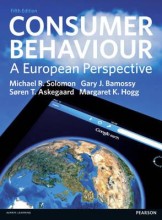Summary: Technical Communication
- This + 400k other summaries
- A unique study and practice tool
- Never study anything twice again
- Get the grades you hope for
- 100% sure, 100% understanding
Read the summary and the most important questions on Technical Communication
-
Mapping the field
This is a preview. There are 2 more flashcards available for chapter 01/10/2015
Show more cards here -
What was the job of technical communicator in the early days?
A technical communicator’s job was to write a good manual -
What had changed in technical "communication"?
- Integrated help files
- Video support
- Help desks
-
What types of communication are provided next to the experts?
- User support
- Other types of User Generated Content.
-
Which competencies does a technical communicator need?
- Technical competencies
- Technology competencies
- Writing/editing/testing competencies
- Writing competencies
- Collaborative competencies
- Evaluation competencies
- Technical competencies
-
Usability & UX
This is a preview. There are 2 more flashcards available for chapter 03/10/2015
Show more cards here -
What are the three researchers that are relevant to this subject?
- Haaksma
- Kurosu
- Lallemand
-
What are the four stages of how technical communication had developed?
- Technical writing => User manual
- Technical communication => User support
- User's advocate => User-technology interaction
- Reflection => Understanding users and technology
-
What is the general agreements of the relation between UX and usability?
General agreement: UX extends usability. Lallemand: UX is rooted in usabilty. -
What part of the Model of Quality characteristics is related to UX?
The concept of UX has two important aspects; the temporal and longitudinal viewpoint and the inclusiveness of subjective aspects.
The Quality in Use is the basis of UX because it includes both the objective and subjective artifactual qualities. (Kurosu, 2015).
Quality in Use = f (Quality of the Artifact, User, Context) -
How do real users define usability (Haaksma, 2015)?
- How easy a product is to use
- Extent to which a product allows users to reach its functions
- How easy a product is to use
-
How do real users define UX (Haaksma, 2015)?
- How well a product works; whether it does what it is supposed to do
- Factors that make products more pleasant to use
- How well a product works; whether it does what it is supposed to do
- Higher grades + faster learning
- Never study anything twice
- 100% sure, 100% understanding































